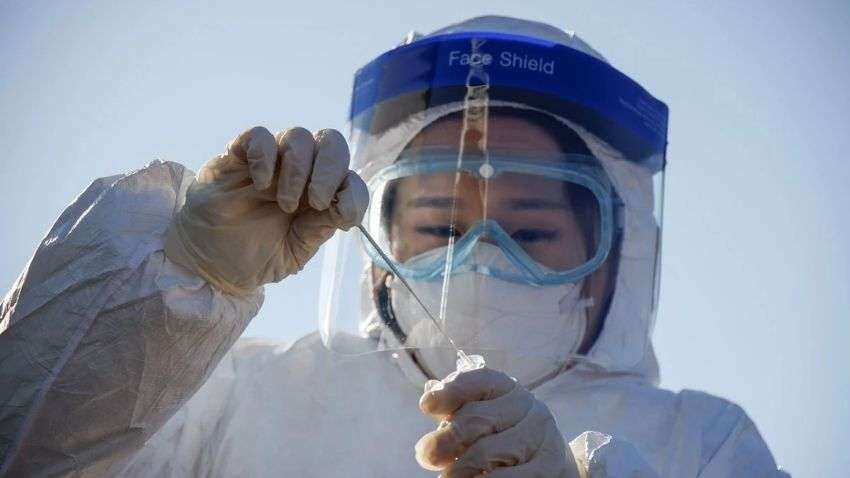New COVID-like virus found in bats, could infect humans, resist vaccines: Study
A team led by researchers at Washington State University (WSU), US, found spike proteins from the bat virus, named Khosta-2, can infect human cells and is resistant to both the antibody therapies and blood serum from people vaccinated forS-CoV-2.

A newS-CoV-2-like virus discovered in Russian bats is capable of infecting humans, and is resistant to current vaccines against COVID-19, a study has found.
A team led by researchers at Washington State University (WSU), US, found spike proteins from the bat virus, named Khosta-2, can infect human cells and is resistant to both the antibody therapies and blood serum from people vaccinated forS-CoV-2.
A virus uses the spike protein to enter and infect the human cells.
Both Khosta-2 andS- CoV-2 belong to the same sub-category of coronaviruses known as sarbecoviruses.
"Our research further demonstrates that sarbecoviruses circulating in wildlife outside of Asia -- even in places like western Russia where the Khosta-2 virus was found -- also pose a threat to global health and ongoing vaccine campaigns againstS-CoV-2," said Michael Letko, corresponding author of the study.
The finding, published in the journal PLoS Pathogens, highlights the need to develop universal vaccines to protect against sarbecoviruses in general, rather than just against known variants ofS-CoV-2.
"Right now, there are groups trying to come up with a vaccine that doesn't just protect against the next variant ofS-2 but actually protects us against the sarbecoviruses in general," Letko said.
"Unfortunately, many of our current vaccines are designed to specific viruses we know infect human cells or those that seem to pose the biggest risk to infect us," the scientist added.
While hundreds of sarbecoviruses have been discovered in recent years, predominantly in bats in Asia, the majority are not capable of infecting human cells.
The Khosta-1 and Khosta-2 viruses were discovered in Russian bats in late 2020, and it initially appeared they were not a threat to humans, the researchers said.
"Genetically, these weird Russian viruses looked like some of the others that had been discovered elsewhere around the world, but because they did not look likeS-CoV-2, no one thought they were really anything to get too excited about," Letko said. "But when we looked at them more, we were really surprised to find they could infect human cells. That changes a little bit of our understanding of these viruses, where they come from and what regions are concerning," he added.
The researchers determined Khosta-1 posed low risk to humans, but Khosta-2 demonstrated some troubling traits.
They found that likeS-CoV-2, Khosta-2 can use its spike protein to infect cells by attaching to a receptor protein, called angiotensin converting enzyme 2 (ACE2), found throughout human cells.
The team then set out to determine if current vaccines protect against the new virus. Using blood serum derived from people vaccinated for COVID-19, the researchers found that Khosta-2 was not neutralised by current vaccines.
They also tested serum from people who were infected with the Omicron variant, but the antibodies, too, were ineffective.
Letko said the new virus is lacking some of the genes believed to be involved in pathogenesis in humans.
There is a risk, however, of Khosta-2 recombining with a second virus likeS-CoV-2.
"When you seeS-2 has this ability to spill back from humans and into wildlife, and then there are other viruses like Khosta-2 waiting in those animals with these properties we really don't want them to have, it sets up this scenario where you keep rolling the dice until they combine to make a potentially riskier virus," Letko added.
Get Latest Business News, Stock Market Updates and Videos; Check your tax outgo through Income Tax Calculator and save money through our Personal Finance coverage. Check Business Breaking News Live on Zee Business Twitter and Facebook. Subscribe on YouTube.
RECOMMENDED STORIES

Small SIP, Big Impact: Rs 1,111 monthly SIP for 40 years, Rs 11,111 for 20 years or Rs 22,222 for 10 years, which do you think works best?

Rs 3,500 Monthly SIP for 35 years vs Rs 35,000 Monthly SIP for 16 Years: Which can give you higher corpus in long term? See calculations

SBI 444-day FD vs PNB 400-day FD: Here's what general and senior citizens will get in maturity on Rs 3.5 lakh and 7 lakh investments in special FDs?
06:19 PM IST









 New Covid wave in Singapore: No need for panic, assures Tamil Nadu government
New Covid wave in Singapore: No need for panic, assures Tamil Nadu government 'Single-minded focus on safety first, followed by efficacy': Bharat Biotech highlights 5 key milestones of COVAXIN
'Single-minded focus on safety first, followed by efficacy': Bharat Biotech highlights 5 key milestones of COVAXIN COVID-19 Update: India reports 159 new coronavirus cases, 3 fresh deaths
COVID-19 Update: India reports 159 new coronavirus cases, 3 fresh deaths COVID-19 Update: India reports 441 new coronavirus cases, no fresh deaths
COVID-19 Update: India reports 441 new coronavirus cases, no fresh deaths Coronavirus news: 3,422 active COVID-19 cases recorded in India
Coronavirus news: 3,422 active COVID-19 cases recorded in India